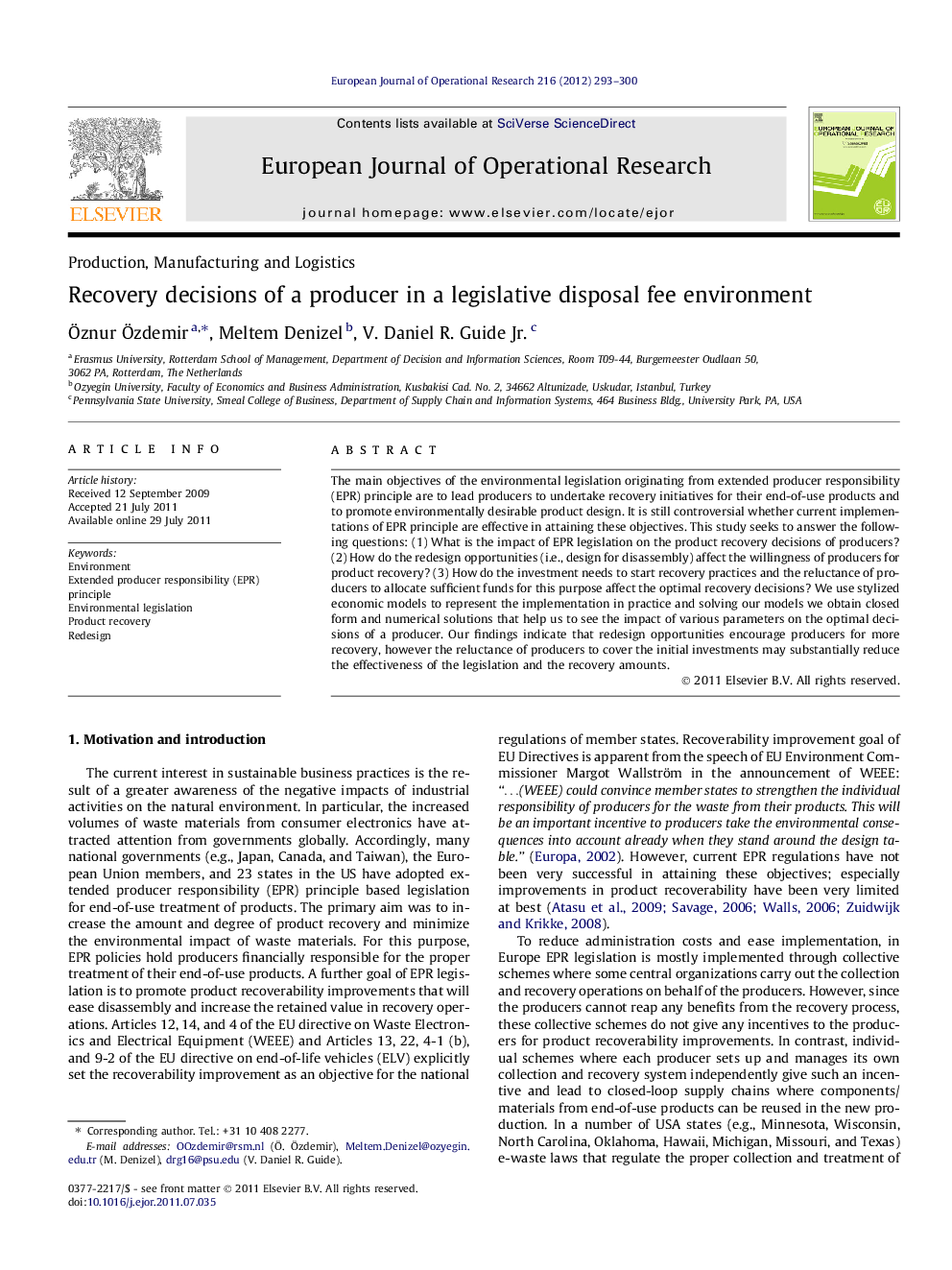| Article ID | Journal | Published Year | Pages | File Type |
|---|---|---|---|---|
| 480168 | European Journal of Operational Research | 2012 | 8 Pages |
The main objectives of the environmental legislation originating from extended producer responsibility (EPR) principle are to lead producers to undertake recovery initiatives for their end-of-use products and to promote environmentally desirable product design. It is still controversial whether current implementations of EPR principle are effective in attaining these objectives. This study seeks to answer the following questions: (1) What is the impact of EPR legislation on the product recovery decisions of producers? (2) How do the redesign opportunities (i.e., design for disassembly) affect the willingness of producers for product recovery? (3) How do the investment needs to start recovery practices and the reluctance of producers to allocate sufficient funds for this purpose affect the optimal recovery decisions? We use stylized economic models to represent the implementation in practice and solving our models we obtain closed form and numerical solutions that help us to see the impact of various parameters on the optimal decisions of a producer. Our findings indicate that redesign opportunities encourage producers for more recovery, however the reluctance of producers to cover the initial investments may substantially reduce the effectiveness of the legislation and the recovery amounts.
► We examine how the environmental regulations affect producers’ recovery decisions. ► We focus on extended producer responsibility principle based legislation. ► We consider product redesign to improve recoverability and initial investment costs. ► Recoverability improvement opportunities encourage producers for more recovery. ► Investment costs and lack of funds to cover them reduce the legislation’s effectiveness.
